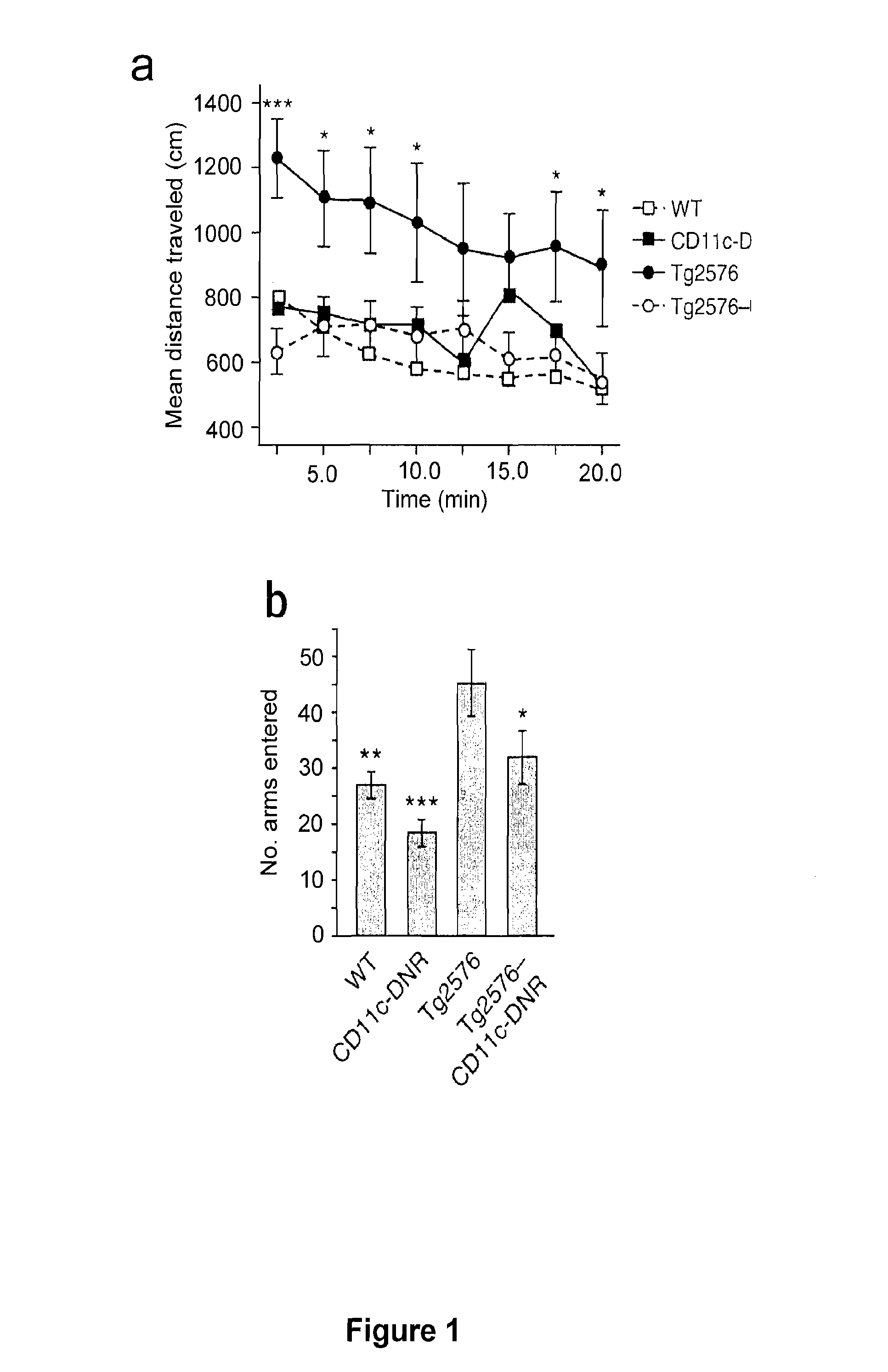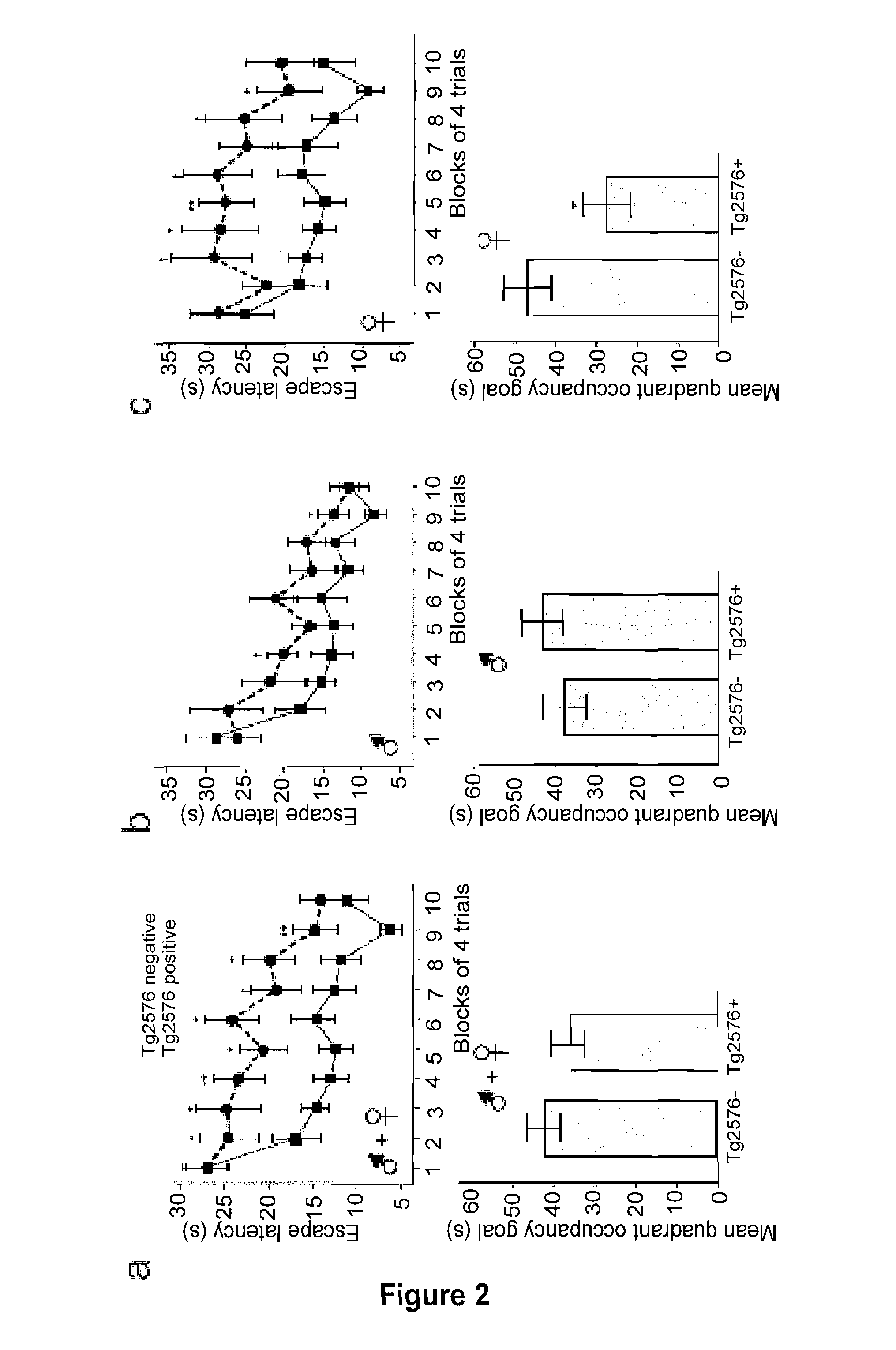Targeting TGF-β as a therapy for Alzheimer's disease
a technology for alzheimer's disease and tgf, which is applied in the direction of drug compositions, peptide sources, peptide/protein ingredients, etc., can solve the problems of difficult relationship between microglial activation and promotion of ad-like pathology, and achieve the effect of enhancing a phagocytosis activity
- Summary
- Abstract
- Description
- Claims
- Application Information
AI Technical Summary
Benefits of technology
Problems solved by technology
Method used
Image
Examples
experimental examples
[0186]The invention is further described in detail by reference to the following experimental examples. These examples are provided for purposes of illustration only, and are not intended to be limiting unless otherwise specified. Thus, the invention should in no way be construed as being limited to the following examples, but rather, should be construed to encompass any and all variations which become evident as a result of the teaching provided herein.
[0187]Alzheimer's disease is the most common dementia and is pathologically characterized by deposition of amyloid-β peptide (Aβ) into β-amyloid plaques, neuronal injury and low-level, chronic activation of brain inflammation and immunity (Selkoe, 2001, Physiol Rev. 81 (2):741-66). Transforming growth factor-βs (TGF-βs) are pleiotropic cytokines that have key roles in immune cell activation, inflammation and repair after injury (Li et al., 2006, Annu Rev Immunol. 24:99-146).
[0188]The results presented herein relate to genetically int...
example 1
Blocking TGF-β-Smad2 / 3 Innate Immune Signaling Mitigates Alzheimer-Like Pathology
[0206]The following experiments were designed to test the hypothesis that blocking innate immune TGF-β signaling would impair cerebral Aβ clearance. However, as detailed below, the results support for the converse hypothesis.
[0207]CD11c-DNR transgenic mice (Laouar et al., 2005, Nat Immunol. 6 (6):600-7) were bred to Tg2576 Alzheimer's disease model mice (Hsiao, et al. 1996, Science 274 (5284);99-102) and behavior of 16-17-month-old progeny was characterized. Tg2576 mice showed hyperactivity (Hsiao, et al. 1996, Science 274 (5284):99-102), probably resulting from disinhibition associated with hippocampal or cortical injury, whereas the Tg2576-CD11c-DNR mice showed complete hyperactivity mitigation (FIG. 1A). Overall analysis of variance (ANOVA) showed significant effects of time (P1C). Spontaneous Y-maze alternation, a measure of spatial working memory, was less frequent in Tg2576 versus wild-type (Hsiao...
PUM
| Property | Measurement | Unit |
|---|---|---|
| pH | aaaaa | aaaaa |
| temperature | aaaaa | aaaaa |
| diameters | aaaaa | aaaaa |
Abstract
Description
Claims
Application Information
 Login to View More
Login to View More - R&D
- Intellectual Property
- Life Sciences
- Materials
- Tech Scout
- Unparalleled Data Quality
- Higher Quality Content
- 60% Fewer Hallucinations
Browse by: Latest US Patents, China's latest patents, Technical Efficacy Thesaurus, Application Domain, Technology Topic, Popular Technical Reports.
© 2025 PatSnap. All rights reserved.Legal|Privacy policy|Modern Slavery Act Transparency Statement|Sitemap|About US| Contact US: help@patsnap.com



